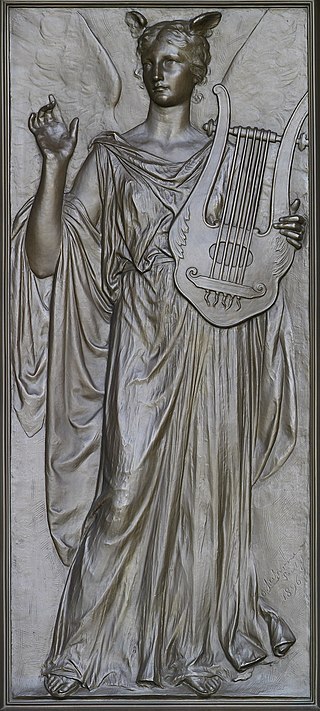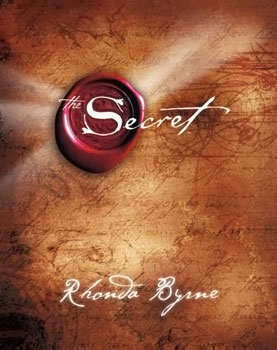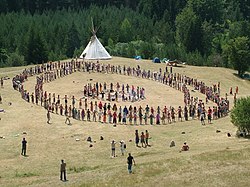In the philosophy of mind, neuroscience, and cognitive science, a mental image is an experience that, on most occasions, significantly resembles the experience of "perceiving" some object, event, or scene but occurs when the relevant object, event, or scene is not actually present to the senses. There are sometimes episodes, particularly on falling asleep and waking up, when the mental imagery may be dynamic, phantasmagoric, and involuntary in character, repeatedly presenting identifiable objects or actions, spilling over from waking events, or defying perception, presenting a kaleidoscopic field, in which no distinct object can be discerned. Mental imagery can sometimes produce the same effects as would be produced by the behavior or experience imagined.
A relaxation technique is any method, process, procedure, or activity that helps a person to relax; attain a state of increased calmness; or otherwise reduce levels of pain, anxiety, stress or anger. Relaxation techniques are often employed as one element of a wider stress management program and can decrease muscle tension, lower blood pressure, and slow heart and breath rates, among other health benefits.
Positive mental attitude (PMA) is a concept first introduced in 1937 by Napoleon Hill in the book Think and Grow Rich. The book never actually uses the term, but discusses the importance of positive thinking as a contributing factor of success. Napoleon, who along with W. Clement Stone, founder of Combined Insurance, later wrote Success Through a Positive Mental Attitude, defines positive mental attitude as comprising the 'plus' characteristics represented by words as faith, integrity, hope, optimism, courage, initiative, generosity, tolerance, tact, kindliness and good common sense.
Uell Stanley Andersen was an American football player and self-help and short story author during the 1950s and 1960s. He is best known for his book, Three Magic Words.

The Secret is a 2006 Australian-American spirituality documentary consisting of a series of interviews designed to demonstrate the New Thought "law of attraction", the belief that everything one wants or needs can be satisfied by believing in an outcome, repeatedly thinking about it, and maintaining positive emotional states to "attract" the desired outcome.
Creative visualization is the cognitive process of purposefully generating visual mental imagery, with eyes open or closed, simulating or recreating visual perception, in order to maintain, inspect, and transform those images, consequently modifying their associated emotions or feelings, with intent to experience a subsequent beneficial physiological, psychological, or social effect, such as expediting the healing of wounds to the body, minimizing physical pain, alleviating psychological pain including anxiety, sadness, and low mood, improving self-esteem or self-confidence, and enhancing the capacity to cope when interacting with others.
The law of attraction is the New Thought spiritual belief that positive or negative thoughts bring positive or negative experiences into a person's life. The belief is based on the idea that people and their thoughts are made from "pure energy" and that like energy can attract like energy, thereby allowing people to improve their health, wealth, or personal relationships. There is no empirical scientific evidence supporting the law of attraction, and it is widely considered to be pseudoscience or religion couched in scientific language. This belief has alternative names that have varied in popularity over time, including manifestation and lucky girl syndrome.

The following outline is provided as an overview of and topical guide to thought (thinking):
Shakti Gawain was an American New Age and personal development writer. Her books have sold over 10 million copies.

Imagination is the production of sensations, feelings and thoughts informing oneself. These experiences can be re-creations of past experiences, such as vivid memories with imagined changes, or completely invented and possibly fantastic scenes. Imagination helps apply knowledge to solve problems and is fundamental to integrating experience and the learning process. As a way of building theory, it is called "disciplined imagination". A way of training imagination is by listening to storytelling (narrative), in which the exactness of the chosen words is how it can "evoke worlds".
The Vividness of Visual Imagery Questionnaire (VVIQ) was developed in 1973 by the British psychologist David Marks. The VVIQ consists of 16 items in four groups of 4 items in which the participant is invited to consider the mental image formed in thinking about specific scenes and situations. The vividness of the image is rated along a 5-point scale. The questionnaire has been widely used as a measure of individual differences in vividness of visual imagery. The large body of evidence confirms that the VVIQ is a valid and reliable psychometric measure of visual image vividness.

Affirmations in New Thought and New Age terminology refer primarily to the practice of positive thinking and self-empowerment—fostering a belief that "a positive mental attitude supported by affirmations will achieve success in anything." More specifically, an affirmation is a carefully formatted statement that should be repeated to one's self and written down frequently. For affirmations to be effective, it is said that they need to be present tense, positive, personal and specific.

The Secret is a 2006 self-help book by Rhonda Byrne, based on the earlier film of the same name. It is based on the belief of the pseudoscientific law of attraction, which claims that thought alone can influence objective circumstances within ones life. The book alleges energy as assurance of its effectiveness. The book has sold 30 million copies worldwide and has been translated into 50 languages. Scientific claims made in the book have been rejected by a range of critics, pointing out that the book has no scientific foundation.
Fantasy-prone personality (FPP) is a disposition or personality trait in which a person experiences a lifelong, extensive, and deep involvement in fantasy. This disposition is an attempt, at least in part, to better describe "overactive imagination" or "living in a dream world". An individual with this trait may have difficulty differentiating between fantasy and reality and may experience hallucinations, as well as self-suggested psychosomatic symptoms. Closely related psychological constructs include daydreaming, absorption and eidetic memory.

The Master Key System is a personal development book by Charles F. Haanel that was originally published as a 24-week correspondence course in 1912, and then in book form in 1916. The ideas it describes and explains come mostly from New Thought philosophy. It was one of the main sources of inspiration for Rhonda Byrne's film and book The Secret (2006).
Guided imagery is a mind-body intervention by which a trained practitioner or teacher helps a participant or patient to evoke and generate mental images that simulate or recreate the sensory perception of sights, sounds, tastes, smells, movements, and images associated with touch, such as texture, temperature, and pressure, as well as imaginative or mental content that the participant or patient experiences as defying conventional sensory categories, and that may precipitate strong emotions or feelings in the absence of the stimuli to which correlating sensory receptors are receptive.
Aphantasia is the inability to create mental imagery.
Audio therapy is the clinical use of recorded sound, music, or spoken words, or a combination thereof, recorded on a physical medium such as a compact disc (CD), or a digital file, including those formatted as MP3, which patients or participants play on a suitable device, and to which they listen with intent to experience a subsequent beneficial physiological, psychological, or social effect.







